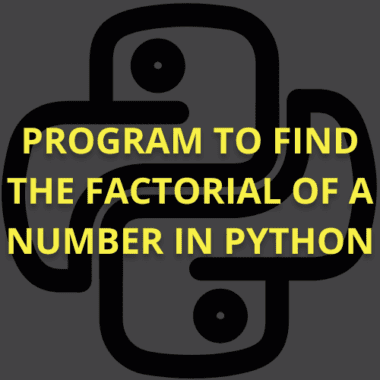Summary: This guide introduces Scikit-Learn, a vital Python library for machine learning, preprocessing, and cross-validation. It provides a basic example, data loading techniques, model creation, fitting, prediction, and tuning. It’s perfect for aspiring data scientists needing a quick reference for their projects.
Introduction
Scikit-learn is a powerful and versatile Python library that provides a wide range of tools for machine learning, preprocessing, cross-validation, and visualisation. It is built on NumPy, SciPy, and matplotlib, making it accessible and reusable across various contexts. As machine learning becomes increasingly integral to data science, mastering Scikit-learn is essential for aspiring data scientists.
For those new to the field, Scikit-learn offers a unified interface that simplifies the implementation of complex algorithms.
For example, one can quickly implement a K-Nearest Neighbors (KNN) classifier with just a few lines of code. The library also includes tools for tasks such as dimensionality reduction using Principal Component Analysis (PCA) and clustering with K-Means.
This cheat sheet will help kickstart your data science projects by providing code examples for creating, validating, and tuning machine learning models efficiently.
Key Takeaways
- Scikit-learn offers tools for machine learning and Data Analysis.
- It simplifies implementing algorithms with a unified interface.
- Essential for preprocessing, cross-validation, and visualization tasks.
- Built on NumPy, SciPy, and Matplotlib for broad compatibility.
- Enables efficient model creation, validation, and tuning.
What is Scikit-Learn?
Scikit-Learn is a highly influential and extensively utilised Machine Learning library in the Python ecosystem. Leveraging the capabilities of foundational libraries like NumPy, SciPy, and Matplotlib, Scikit-Learn offers a versatile platform for comprehensive Data Analysis and robust predictive modelling, catering to a wide array of Machine Learning tasks.
Features of Scikit-Learn
Knowing the features of Scikit-Learn is crucial for efficiently leveraging this powerful Machine Learning library. Understanding its features enables better algorithm implementation, enhances predictive accuracy, and fosters the creation of scalable, efficient Machine Learning models. Here are the key features:
- Simple and Efficient Tools: Scikit-Learn provides simple and efficient data mining and analysis tools. Its design emphasises clarity, straightforwardness, and efficiency, enabling beginners and experienced users to implement Machine Learning models easily.
- Wide Range of Algorithms: The library includes many Machine Learning algorithms for classification, regression, clustering, and dimensionality reduction. Popular algorithms such as support vector machines, random forests, k-nearest neighbours, and gradient boosting are readily available.
Key Functionalities
Understanding the critical functionalities of scikit-learn is crucial for leveraging its robust Machine Learning tools. Mastery of Scikit-Learn enhances your ability to implement and fine-tune algorithms, accelerating your Data Science projects and driving better predictive insights. Key functions are:
Data Preprocessing
Scikit-Learn offers robust data preprocessing utilities, including scaling, normalisation, and encoding categorical variables. These preprocessing steps are crucial for preparing data before feeding it into Machine Learning models.
Model Selection and Evaluation
The library excels in model selection and evaluation, providing tools for cross-validation, grid search, and performance metrics. This helps users fine-tune their models and choose the best-performing algorithm.
Community and Support
Scikit-Learn benefits from a vibrant community of developers and users. Extensive documentation, tutorials, and various resources ensure that users can find support and guidance as they work on their projects.
Describing Scikit-Learn Cheat Sheet
The Scikit-Learn Cheat Sheet is a comprehensive guide that covers various aspects of Scikit-Learn. It includes helpful tips, sample code, and best practices to accelerate your Machine Learning projects. Whether you want to understand the basics or fine-tune your skills, this cheat sheet covers you.
Why Does Scikit-Learn Cheat Sheet in Machine Learning Matter?
Knowing about the Scikit-Learn Cheat Sheet is essential for Machine Learning enthusiasts as it quickly references key functions and techniques. Therefore, understanding the importance of the Scikit-Learn Cheat Sheet is crucial for anyone venturing into the world of Machine Learning. Here are some reasons why it matters:
- Simplicity: Scikit-Learn Cheat Sheet simplifies complex Machine Learning concepts, making them accessible to everyone.
- Time-Saver: It saves valuable time by providing ready-to-use code snippets and solutions.
- Versatility: Scikit-Learn Cheat Sheet covers various Machine Learning tasks from classification to regression.
Examples of Scikit Cheat Sheet
In this part of the blog, you will learn about examples from the Scikit-Learn Cheat Sheet. This resource aids in efficiently implementing algorithms, preprocessing data, and evaluating models, making it indispensable for efficient Machine Learning projects.
- Loading a Dataset:
- Splitting Data into Training and Testing Sets:
- Creating and Training a Classifier (e.g., Decision Tree):
- Making Predictions:
- Evaluating Model Accuracy (Classification):
- Feature Scaling (Standardisation):
Getting Started
Before diving into the intricacies of Scikit-Learn, let’s start with the basics. To begin your Machine Learning journey, you must install Scikit-Learn, which can be done using the pip package manager. Once you have it installed, you are ready to embark on your Data Science adventure.
Data Preprocessing
Data preprocessing is a vital step in any Machine Learning project. You must clean, transform, and prepare your data before feeding it into your model. Scikit-Learn Cheat Sheet provides handy functions and methods to streamline this process.
Feature Selection
Selecting the most relevant features for your model is crucial. The Scikit-Learn Cheat Sheet offers insights into feature selection techniques, ensuring your model is optimised for performance.
Model Selection
Scikit-Learn boasts a variety of Machine Learning algorithms. The cheat sheet helps you select the right one for your specific task: regression, classification, or clustering.
Model Evaluation
Evaluating your model is essential to ensure it meets your expectations. It showcases various metrics and techniques for model evaluation.
Hyperparameter Tuning
Hyperparameters can significantly impact your model’s performance. Use the cheat sheet to learn how to optimise hyperparameters effectively.
Deployment
The final step in any Machine Learning project is deploying your model. Scikit-Learn Cheat Sheet guides you through this process, making it a seamless experience.
More to Read: Feature Engineering in Machine Learning.
Best Platforms to Access Scikit Cheat Sheet
Now, you will look at the best platforms to access the Scikit cheat sheet. It provides quick reference guides, boosts productivity, enhances learning, and ensures efficient use of Scikit’s extensive library. Accessing reliable platforms ensures accuracy and up-to-date information for better project outcomes.
Scikit-Learn Official Documentation
The official Scikit-Learn documentation is a comprehensive resource that includes cheat sheets, tutorials, and detailed explanations.
Website: Scikit-Learn Documentation
GitHub Repository
The Scikit-Learn GitHub repository provides access to the library’s source code, issues, and releases.
Repository: Scikit-Learn on GitHub
Scikit-Learn Cheat Sheets on GitHub
GitHub hosts community-created cheat sheets and reference materials for Scikit-Learn. These sheets cover various aspects of the Software, making it easier to grasp its functionality.
Repository: Scikit-Learn Cheat Sheets on GitHub
Kaggle Tutorials
Kaggle is a popular platform for Data Science and Machine Learning competitions. It offers interactive tutorials on Scikit-Learn, including cheat sheets and hands-on examples.
Website: Kaggle Tutorials
DataCamp’s Scikit-Learn Cheat Sheet
DataCamp provides an easy-to-follow Scikit-Learn cheat sheet that covers essential functions and methods for Machine Learning tasks.
Cheat Sheet: Scikit-Learn Cheat Sheet on DataCamp
Medium Articles and Blogs
Various bloggers and Data Science enthusiasts have published articles and blog posts about Scikit-Learn cheat sheets and tips for using the library. Medium is an excellent platform for finding such resources.
YouTube Tutorials
YouTube video tutorials can be a helpful way to learn Scikit-Learn. Many content creators create educational videos that include cheat sheets and practical examples.
Online Courses and MOOCs
Platforms like Pickl.AI offer Machine Learning and Data Science courses that often include Scikit-Learn cheat sheets and practical exercises.
Remember that the best resource for you will depend on your learning style and your specific needs. Explore the options listed above, and you’ll find valuable Scikit-Learn cheat sheets and resources to help you in your Machine Learning journey.
Frequently Asked Questions
What is Scikit-Learn?
Scikit-Learn is a Python library that provides simple and efficient tools for Machine Learning. It is built on top of NumPy, SciPy, and Matplotlib and is an excellent choice for beginners and experts.
Is Scikit-Learn suitable for Deep Learning?
Scikit-Learn is primarily designed for traditional Machine Learning tasks. For Deep Learning, you might want to explore libraries like TensorFlow or PyTorch.
Can I use Scikit-Learn for Natural Language Processing (NLP)?
Scikit-Learn offers tools for essential text processing and feature extraction, making it suitable for some NLP tasks. However, you may need specialised libraries like NLTK or spaCy for more advanced NLP.
Conclusion
In conclusion, the Scikit-Learn Cheat Sheet is an indispensable resource for anyone looking to excel in Machine Learning. It provides a wealth of information, practical tips, and insights to help you confidently navigate Scikit-Learn’s complexities.
Using this cheat sheet, you can streamline your Machine Learning projects and achieve better results. So, go ahead and make the most of this valuable resource.
Start Learning Machine Learning for free with Pickl.AI’s ML101
Pickl.AI’s Machine Learning course is available free of cost and is the best way to learn critical concepts of ML. Individuals who are new to the data domain can start acquiring foundational expertise with this free ML 101 course. After completing this program, you can also enroll in Pickl.AI’s Data Science courses to upskill yourself.




